JOZI NOSE TO TAIL
Tripe & trotters in Joburg: How are we with food holism?
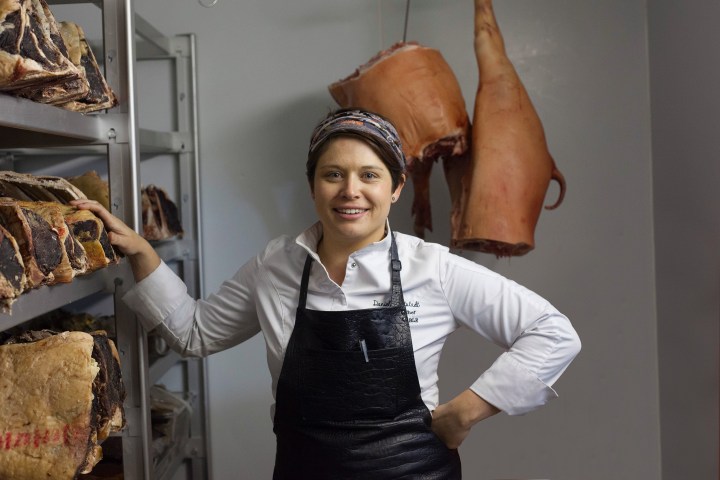
If there’s someone who can get people to eat the forgotten pieces of offal and make use of everything else, it’s a fearless chef who’s also a butcher, like Daniela Gutstadt.
Even though Fergus Henderson’s book, The Whole Beast: Nose to Tail Eating, is seven years old, “nose to tail” is still a good phrase for understanding not wasting any part of an animal. There’s also The Whole Fish Cookbook: New Ways to Cook, Eat and Think that Australian chef Josh Niland gave us about “scale to tail” in 2019. How far are we in our no-waste, have-some-respect quest?
Somehow I thought I’d be able to give a real Jozi nose-to-tail how-to and where-from. I reckoned without the abattoir rules, the health inspection rules and a lot of avid money being made from passing on the less obvious offal.
But let’s see who’s doing some “nose to tail” and how much of it and where we come in.
I’m pretty sure by now we’re relaxed about eating lamb’s liver, which has suddenly become remarkably difficult to find in shops, even eating ox liver. We eat kidneys, even outside the pies, though they have suddenly become scarce too. Then, we’ve been eating oxtail and short ribs for so long we’re a bit surprised when they’re referred to as offal. Necks are usual to us. Yes, even though the pig has no neck to speak of, there is a piece of shoulder that’s called that. A very good ingredient too.
And we really want to be talking about more than tripe, the ingredient of our national dish and the most sought-after raw food item in the chain that links the abattoir and the consumer.
But before we see who’s successfully and path-findingly doing what, let’s consider why anyone would not want to do some nose to tailing.
First, we tend to throw away stuff we don’t respect. The nose to tail concept is about respecting food, affording the beast, of which you are about to eat a section, enough recognition to make good use of the rest of its body, all of its spent life.
The second thing is that we rather guiltily throw away food that we don’t know what to do with. So we all want a little education, including the food shops and suppliers, butchers, abattoirs.
Third, many of us think we “don’t like” certain food items, without even trying them. That just seems unthinkably silly.
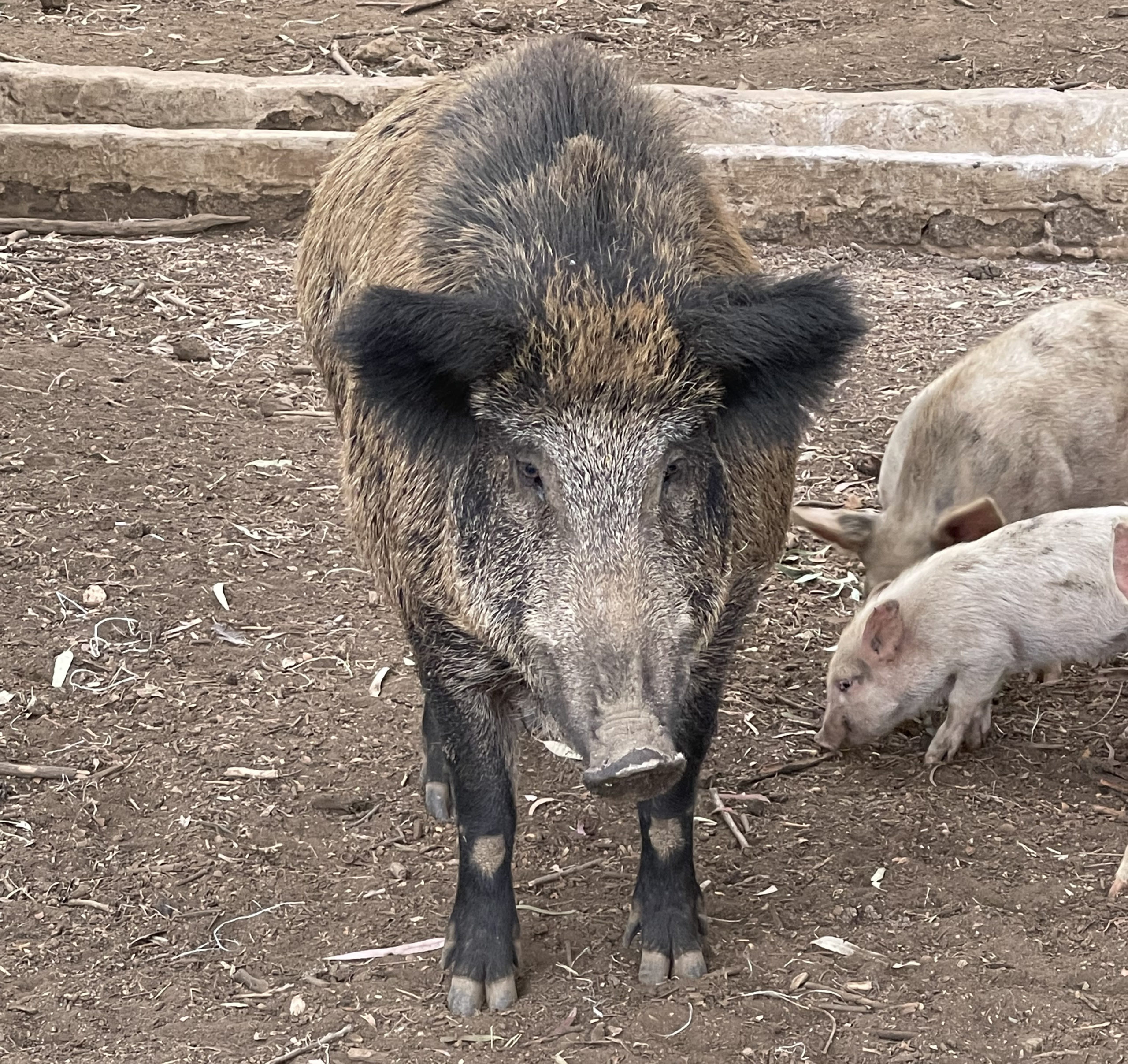
Boars are some of the animals free to range on Chef James Diack’s family farm, Brightside. (Photo: Liza Perold)
Chef James Diack’s family has an Eden of a farm in the nearby Magaliesberg, called Brightside. Almost 100% of the foods that he serves at his restaurants, La Contadino, Coobs – still to reopen – and at the La Stalla deli, all in Parktown North, originates from the farm. It grows all the fruits and vegetables, herbs, even some grains, and produces milk for cheeses, butter, eggs. It rears chickens, pigs, boars, sheep and cattle. Charcuterie is produced right there.
I’ve visited the farm a couple of times and smiled to see the boars romping with the pigs, free roaming, and seeing the chickens and ducks treated with vitamins instead of chemicals. Nothing is fed any of those.
Luckily, as James says, the abattoir is within walking distance of the gate. There, the deal is that, for slaughtering, the fee is not only the offal but the skin too. Selling on these items is how the abattoir makes his money. The star seller is always tripe. James also manages to buy back some of the offal items for his restaurants, including some tripe now and then. He uses trotters a lot, for example in carbonara sauces. He also finds when things are crisply fried, people will try them.
We discuss other countries, where offal plays such major roles in national cuisines. Political divisions in South Africans’ status and what is regarded as poor cuisine or “other” has really complicated ours.
James Diack can split up almost a whole animal between the three places, which was the idea for designing them like that.
“It was a farm-first concept and nose-to-tail led me to have the multiple restaurants of different styles.” The finer cuts would go to Coobs (still to reopen). The country-style pieces go to Il Contadino and the remainder into charcuterie, bacon, sauces like his very popular boar ragu, at the La Stalla deli or for tapas at Antonym, also to reopen.
James hasn’t found that the nose to tail idea works as well in restaurants as he’d have liked.
“Tasting menus with stuff like cockscombs and rabbit brains had shock value and just scared people away.” He says chefs all over the world and here went to extremes at the outset, instead of introducing diners gradually to offal items made to be wonderfully tasty, even comforting.
Andrew Johnson of The Little Deli in Linden tells me, “A pig is really like a sausage. The same ratio of meats and fat in the whole body is used as is.” I trail him through the factory which is an attractive house in Linden. The very front rooms are an office and an ever expanding deli. I’ve already had an excellent coffee and pork pie in the garden.
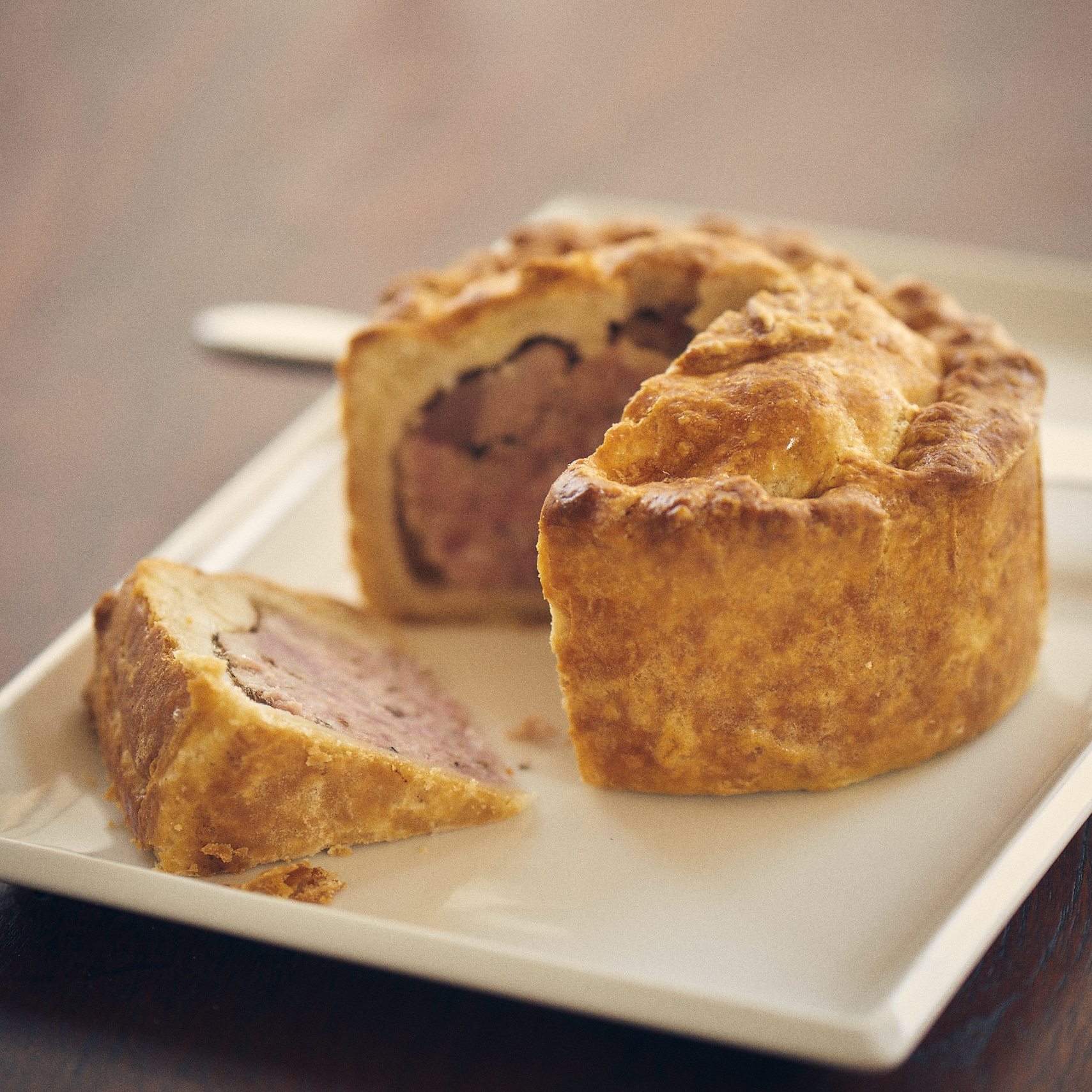
Pretty much everything pork is used here, one way or another, including in the Melton Mowbray type pies. (Photo: Supplied)
The sausage maker, as I see it, is the man that does nose to tail best. Andrew draws a picture for me of all the cuts and details how he is using them.
Andrew gets the whole animal delivered to his door by the farmer, not the middle man or agent. “The suppliers are chosen for their outdoor animals, living sustainably. I can’t stand the cruelty to penned pigs that is going on.” James Diack has told me similar stories, reducing me to tears.
Andrew then goes to work, utilising everything he is given. Everything except the pig’s kidneys, which “form part of the meat inspection’’ and so have to accompany the carcass. The other actual innards like the liver, heart and lights have been removed by either the abattoir or the farmer in different instances, for selling on, the high price as always received for the tripe. Andrew finds the pig kidneys too pungent for his products. By the way, he does not receive the head because the market for pig heads, like tripe, is high. He would certainly use it if it were feasible. “So it’s neck to tail. It’s important to me that there’s no waste.”
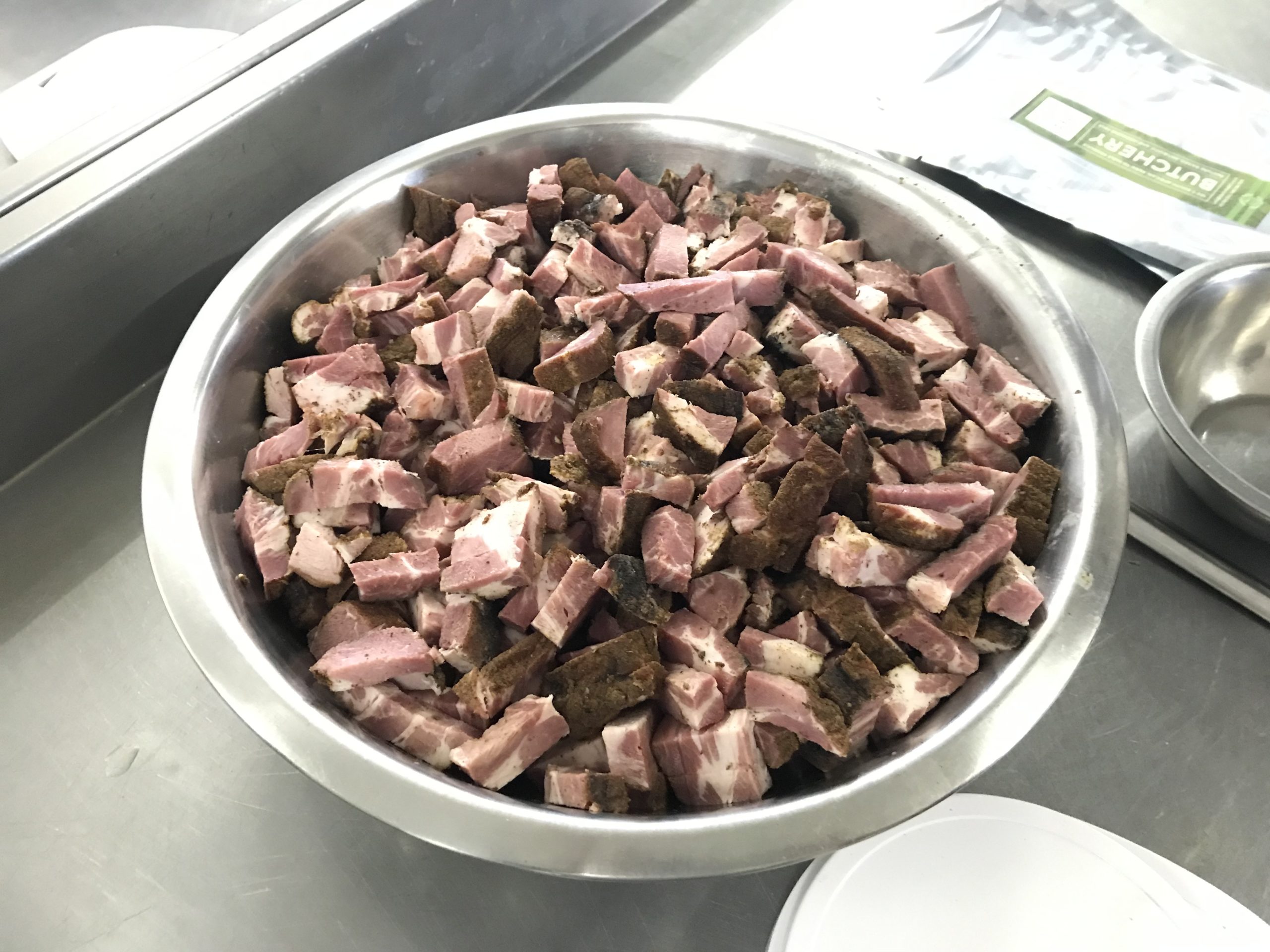
Andrew Johnson of The Little Deli in Linden utilises everything he’s been given. (Photo: Marie-Lais Emond)
Pretty much everything is used here, one way or another. He makes artisanal sausages chiefly, pies of the Melton Mowbray sort, Scotch eggs, delicious nitrates-free bacon, salami, pastrami, bresaola, stock, pasta sauces. The factory part is daylight bright, spotless and smells delicious. He even shows me the outside smokers, all artisanal, as are the products.
I’m a Scotch egg fanatic and appreciate my luck. I buy these and salsiccie, saucissons, pies, wonderfully streaky bacon, even very cheap avos from the garden. Andrew’s wife makes French patisserie, including madeleines.
There’s a whole range of unbelievably good pork sausages and they are so fine, he says, because the ingredients are so righteously good. Even the pie pastry uses lard. Not a bone, knuckle, shin, tendon or any item is wasted. Here things are boiled down, softened, developed into aspic or mince. Even part of the skin is rendered down. The other two-thirds of the skin is given away for rendering too. Those wholesome but pungent pig kidneys are given away as well.
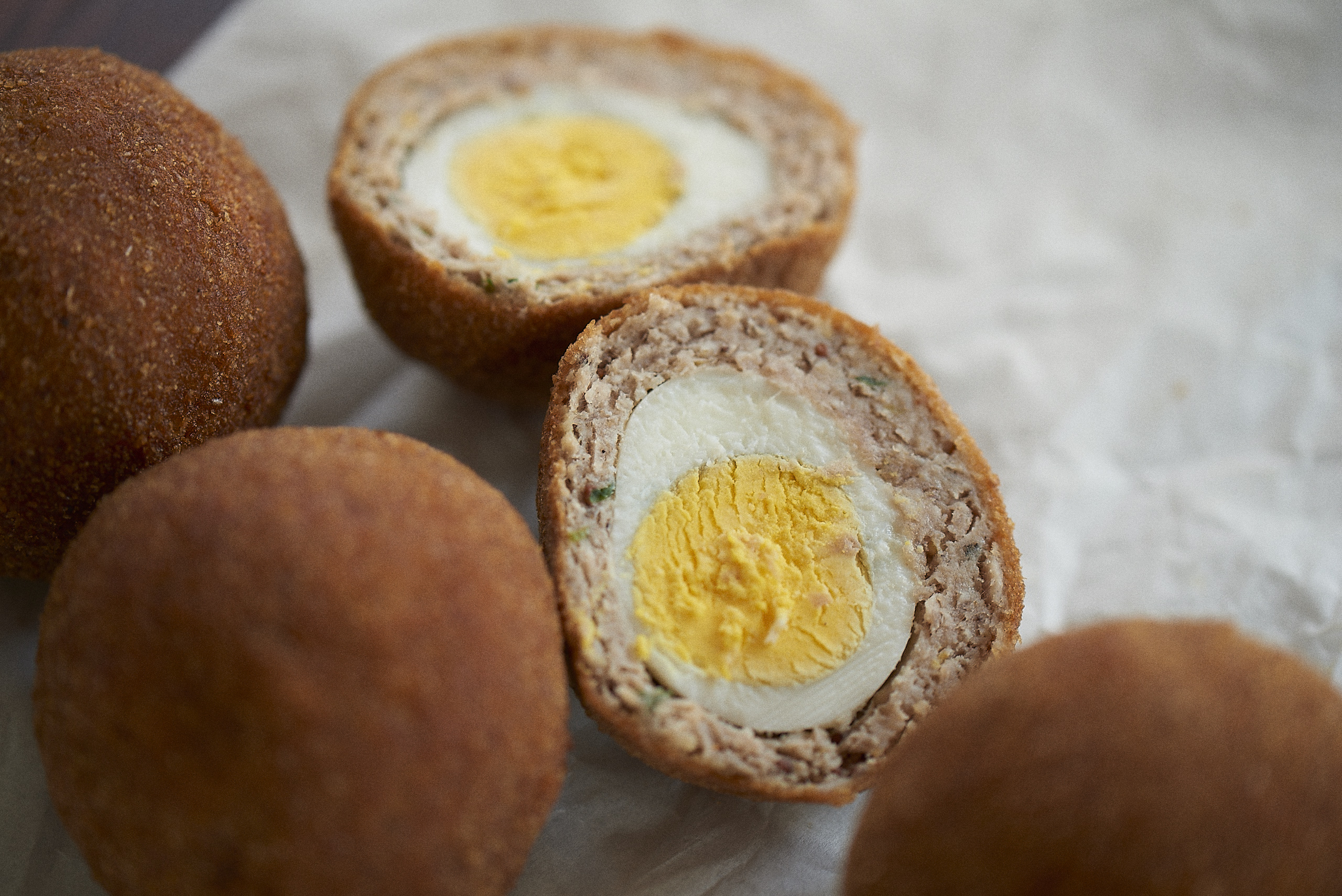
Scotch eggs, part of my shopping parcel including salsiccie, saucissons, pies, wonderfully streaky bacon, even very cheap avos from the garden at The Little Deli in Linden. (Photo: Supplied)
About four years ago my respect for nose to tail ideas was quickened. At a country osteria near Refrontolo in the Veneto region of Italy, on the chalkboard menu, following a regional tripe dish, were nervi. I ordered them. My sister and I understood they were actually tendons, slow-cooked and set in their own resulting jelly, sliced and served with pickled vegetables. The point is they were deliciously prepared food and nothing of the animal, even the tendons, was being wasted.
Chef Marthinus Ferreira of DW Eleven-13 has used tendons, long and slow-cooked, for crackling. For that he’s also used fish offal, often easier to come by than animal offal, using the eyes, cheeks, tongue and stomach.
At present, there are veal sweetbreads on the menu, as well as the more common oxtail and bone marrow. Marthinus is always after depth of taste and cooking methods like sous vide bring it out, like the lamb tongue he’s served. He also had pig ears on his menus a few years ago, boiled then thinly sliced and crisped. He’s done lambs’ and pigs’ tails, also rendered and wonderfully deep-fried. People are fine with ox ones but a bit wary of the others.
He’s never flinched from that so-called fifth quarter, or “all of the pig head stuff” and talks about the various cooking methods, like a smoked beef heart tartare he served with a salted duck egg yolk. I’ve had some beautiful heart carpaccio at the now-closed NCW in Melville and reckon, with a hard-working organ like that, for it to be tender, having it raw might even beat long slow cooking.
Chef Daniela Gutstadt of her restaurant Culinary Table in Lanseria is also a butcher with her own butchery. I’ve long been a fan of this no-nonsense chef who, long before anyone was mouthing the word “organic”, was actually doing the sustainable growing right outside her restaurant.
She still does and now her ethics have, in addition, been active in how and when and where her meat is acquired and then butchered, processed and used. There’s nothing like doing it herself.
From the very nearby abattoir Daniela is able to request offal. “It’s not always possible because it’s often the fee for the abattoir but I do.” She uses it for both her deli and the restaurant.
By doing the butchery, she can even do more than the oxtail itself, by using the 15 centimetre stretch at the end of the tail that usually gets docked. She uses that chiefly for more gelatine or grills and salts it. And on the subject of tails, Daniela likes to sous vide and grill lambs’ tails, which have proved to be best sellers. Pork tails need to be collected to make enough for a dish.
She refers to the usual organs like liver and kidneys as the “all the vanilla organs” and prides herself on being skilled enough to use any of them and to use them well. Her pigs heads are utilised fully and the cheeks prepared as popular guanciale.
What she found to be a controversial move was to use the whole chicken on the rotisserie or in the pizza oven, when she makes her great roast chicken. I still believe hers to be the nicest in Joburg mainly because of the way the skin is understuffed with its own fat.
“Some people said cooking the whole chicken was disgusting! Well, that’s just ignorance. It makes best use of the protein fat.” There are plenty of other people who understand and like it.
Tripe is one of her most popular dishes, curried. If there’s someone who can get people to eat the forgotten pieces of offal and make use of everything else, it’s a fearless chef who’s also a butcher like Daniela Gutstadt. And it helps having a deli.
All these chefs are adamant about respecting meat food enough not to waste it or treat it with disdain. As was pointed out to me yesterday, holistic eating and using food this way is not just for eating on a budget. It’s a bit more important than that.
It’s a good plan for all of us to try something new, especially in the offal line, to educate ourselves a bit. How can it be “disgusting” to use the whole animal, instead of wasting it? That’s really skewed thinking. Or not thinking. DM/TGIFood
Il Contadino, Parktown North. 010 900 1363
The Little Deli, Linden. 011 782 1350
DW Eleven-13, Dunkeld West. 011 341 0663
Culinary Table, Lanseria. 011 017 0999
SUBSCRIBE: There’s much more from Tony Jackman and his food writing colleagues in his weekly TGIFood newsletter, delivered to your inbox every Friday. Subscribe here. Also visit the TGIFood platform, a repository of all of 0ur food writing.
The writer supports Nosh Food Rescue, an NGO that helps Jozi feeding schemes with food ‘rescued’ from the food chain. Please support them here.





 Become an Insider
Become an Insider
Get to Dal-Italia restaurant in Hermanus and have their “tripa napolitana”
Hello Marie-Lais Emond,
Thank you for a delightful article, you really got our taste buds going.
We are already planning a recce to check out your recommendations.
Have a good day.